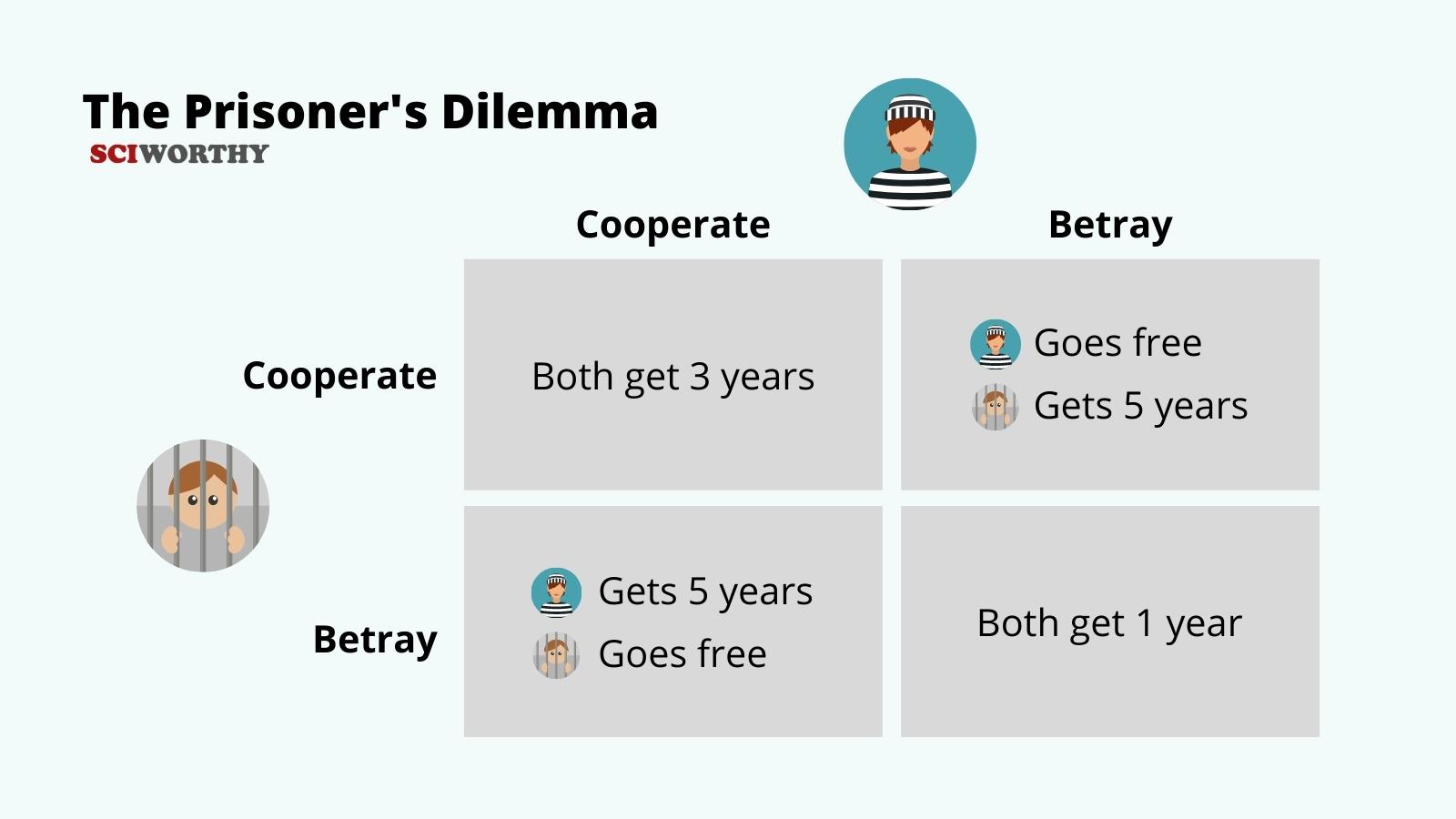The Prisoner’s Dilemma is a game theory thought experiment from the 1950s. In the story, two criminals are caught. They are each asked to turn the other in in exchange for a lesser sentence. If both prisoners turn each other in, they both serve a long time in prison. If the first turns in the second, but the second remains loyal, the first one goes free and the second serves a long sentence. If both criminals remain loyal to each other, both are given lesser sentences. Both players will eventually realize that betraying the other will be in their best interests, no matter the case.
In both scenarios, betraying the first prisoner works in the second prisoner’s favor. The first prisoner will also benefit by betraying his accomplice, resulting in what is called a Nash Equilibrium. A Nash Equilibrium occurs when each individual player suffers a loss or lower payoff by switching choices, assuming the other player’s actions don’t change. Because each player makes the optimal choice, both will always choose to betray the other, no matter the circumstance. This is the Prisoner’s Dilemma (PD), when both players betray the other and both end up losing considerably.

Researchers at Western Kentucky University conducted a study to see how people of different backgrounds and age groups react when confronted with this dilemma. The experimenters compared a young group (ages 18-24) to an older group (ages 56-82). Some participants joined the study along with a friend, while others joined alone. Participants interacted with both strangers and friends when asked for their response to the dilemma.
The participants were presented with a multi-round PD game that had an “alone round” as well an “interactive round.” Instead of making one decision, players had to make several decisions that impacted later decisions, like a board game.
In the alone round, participants were able to make choices based on the choice they made in their previous turn. In the interactive round, participants played either with a friend or a stranger. They could only interact though the game’s choices and couldn’t talk to each other.
When playing against a stranger, players were only given the other player’s age group. Each player had to play off of the move that the other participant made prior to them. The objective of the game remained the same, as did the payoff amounts for each move and the amount of turns per player.
In the alone round, the younger group showed that they were more likely to make the optimal choice in the final turn than the older group. Both groups, however, showed that they understood that the goal of the game was to maximize the payoff by thinking of long-term gain.
In the interactive round, participants cooperated more with friends than with strangers. The older group cooperated more than the younger group when partnered with a selfish partner, but when taken advantage of, most showed good-will and gave their partner a second chance. The younger group, when placed in the interactive round, were more likely to block the other player from payoffs than the older group. The older participants were more likely than the younger ones to be cooperative and assume that the other player was trustworthy.
The researchers speculated that the older group behaved this way to influence their partner into cooperating. When their partner cooperated, they perceived their partner favorably. The findings from this study lined up with those of a different study which showed that younger adults were less likely to trust players who showed self-interested behavior. Players were more cooperative with their friends than when playing with strangers. Players were also harsher with their friends in the cases when their friends did not reciprocate cooperation.
This study was the first to report on different age groups’ interactions with different people when presented with a multi-round Prisoner’s Dilemma game. It was not able to completely capture how different people react to an iterated Prisoner’s Dilemma game as is the first of its kind, but it gave researchers a glimpse into how different ages respond to it.


